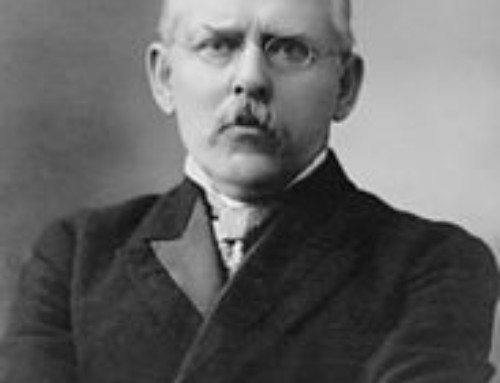Small businesses live and die by their cash management practices.
I’ve run my own business since 2012 and seen the inside of +100 small businesses. Time and time again I see it and feel it … you gotta be smart with $ or else you’ll run yourself into the ground.
As my good friend Brian Lofrumento says, most businesses fail not because people give up but because they run out of money.
Running out of money is a preventable problem.
Smart cash management is the solution.
I first wrote about intentional cash management in Get a Grip on Your Time and Money (Podcast Bonuses). Since then I’ve learned a few more tricks.
Remember my Money Tripper approach to cash management?
Version 1.0 – First list expenses/outflows in priority order, then track money as it comes in … my fancy spreadsheet would show how deep down the list of expenses you actually had cash on hand to cover. The approach forces prioritization of expenses and reveals how much (or how little) of those can be afforded in the present moment. A huge cash management hangup for a lot of businesses is spending money that’s not yet in hand. “Oh, we can pay for this once Project X comes in, and then after Dave pays us, we’ll be in a real good spot.” Then Project X doesn’t come in, and Dave goes out of business and you never collect. So your money is already spent, but the $ you planned to receive to cover it never came in. #Hosed.
Version 2.0 – Same concept, but a fixed % of every dollar of revenue that came in was stripped away and dedicated to saving up for taxes and saving up to make a donation to my church. So whenever I got $100, instead thinking the business had $100 to spend, my Money Tripper 2.0 took out a percentage for taxes and tithing, leaving more like $75 for the business to apply toward expected expenses.
Version 3.0 – What I’m sharing today.
Introducing … Profit First.
The Profit First approach to cash management for small business:
I’m so glad friends in YNAB Fans said something about entrepreneur and author Mike Michalowicz so that I could find Mike’s Profit First cash management method and the YNAB for Small Business group.

Go ahead and get a copy of Mike’s book and lean on this summary:
(FYI there are add-on variations for contractors, e-commerce, micro gyms, dentists and tradies.)
[1] We are taught that profit comes LAST.
revenue – expenses = profit
First, you make money.
Then, you cover expenses.
And what’s left?
… that’s profit.
Our inherited/default psychology runs our businesses in this order.
[2] Things expand to the space allotted to them: Parkinson’s Law.
Small business owners make decisions on the fly.
We open our banking apps, look at $ in the bank or available credit on a card, and decide ON THAT whether to make a purchase.
We see it … we spend it.
[3] Expenses expand to all visible dollars, consuming 100% of revenue. There is no profit. 💸
Put [1] and [2] together and this is the outcome.
Cash management that sucks.
What if we flipped the profit order and used Parkinson’s Law to our advantage?
You can, and it will RADICALLY improve your cash management to keep expenses in check, grow your business and produce profits you actually realize and enjoy.
Enter … PROFIT FIRST.
[1 revised] Profit comes FIRST.
revenue – profit = expenses
First, you make money.
Then, you set some aside for profit.
And what’s left?
… that’s money available for expenses.
[2 revised] Things still expand to the space allotted to them, but we draw boundaries to how far they can go.
The crux of the Profit First method is to open at least 5 separate bank accounts (more later on why you might do more than 5):
- Income
- Profit
- Owner’s Comp (OComp)
- Taxes
- Operating Expenses (OPEX)
Deposit all revenue into Income: deposit checks there, have Stripe and Square deposit funds there, etc.
Once or twice a month, EMPTY the Income account into the other accounts.
How much will you put in each account? Chapter 4 lays out a process for determining that. The amounts will change each time as they are not fixed $ amounts, but percentages. Each of the 4 accounts (#2-5) have their own Target Allocation Percentage (TAP).
Every business is different, and Chapter 4 has an exercise to help you land on your TAPs.
The book has this table of benchmark TAPs by Real Revenue Range.

[3 revised] Expenses expand to just visible dollars in OPEX, a smaller % of revenue. There IS profit.
Yes, this is like the Envelope Budgeting Approach applied to small business.
If you are running a business that doesn’t have a full-time bookkeeper, accountant and controller who can fill you in daily, then you need a cash management approach like this.
The best banks for Profit First
OK, so now that you’re onboard with this small business cash management approach … how on earth do you implement it??
If you are running a microbusiness, chances are GREAT that traditional big banks (Chase, Wells Fargo, US Bank, BoA) are not going to work for you. They have significant account minimums that would tie up precious working capital or monthly fees that eat away at your profit.
So what do you do?
Here are my favorite banks for small businesses that also make it easy to follow the cash management practices of Profit First:
[1] Brex
zomg. Love Brex.
Based in my home state of Utah.
Super clean interface.
Free ACH transfers – makes it mad easy to pay vendors.
No minimums.
No standing monthly fees.
FREE to open up to SEVEN accounts under one business … perfect for Profit First!
Each account has its own account number, so you can send and receive directly into these accounts if needed.
MAD easy to add as many cards as you need to give to contractors, employees, while also limiting their spending limits.
Can create virtual “vendor cards” in 5 seconds online. If that one card gets compromised, you can shut it down without having to reset card info for alllll your other vendors.
For US businesses only.
Use my link and get $250 after signing up.
[2] Novo
Novo is also part of the wave of new, online-first banks.
Also a very clean app, great features, and the option to create “Reserves” (up to 5 per account) for following the Profit First method.
Includes a tool to send and process invoices for free!
[3] Small Business Bank
“YOUR HOMETOWN BANK. WHEREVER YOU LIVE.”
I’ve been with SBB since 2013!
While Brex and Novo are more like startups with designers and developers making a slicker banking experience, SBB are first and foremost small business bankers. So their website and app are a bit clunky, but when you need to interact with a person who knows what’s up and is ready to offer premium service, they CANNOT be beat!
Similar to Novo and Brex, SBB has no minimums and no regular fees.
Service is and always has been amazing.
They allow up to four accounts (two checking, two savings) per business … and you can register more than one business under your individual log in. (Brex and Novo allow just one business per log in, so if you have multiple entities, you’d use a different email/login for each entity.)
“You said earlier ‘at least’ 5 accounts … why?”
Thanks for the reminder.
If you run a product sales or resource-heavy business … it would also be smart to open (at least) two more accounts “on top” of the 5 noted above.
These would be:
- Gross Revenue
- Cost of Goods/Services Sold (COGS/COS)
- Income, aka Real Revenue
- Profit
- OComp
- Tax
- OPEX
COGS/COS would be … the price of inventory you buy to sell. The cost of raw materials used to make a product to sell. The cost of a temporary subcontractor to fulfill a project.
Managing your money this way will ensure you always have working capital.
Remember, there are industry-specific suggestions for additional accounts and Profit First adaptions in these these extension books. Profit First, for …
Regardless of what industry you’re in …
Starting TODAY, strive to have 3 months of working capital on hand. Then shoot for 6 months. Setting and accomplishing that goal will require significant changes to how you’ve been managing cash up to this point.
Adding Gross Revenue + COGS accounts also makes it SUPER easy to calculate gross profit margin (GPM), while the rest of the system makes it easier to calculate net profit margin (NPM). What’s the difference?
Business Success Rules of Thumb: 50% GPM and 10% NPM (see page 53).
In simple English this means:
- If you sell something, you better sell it for DOUBLE what it cost you to make it (50%). You will spend at least 40% of the rest of what you brought in paying yourself, your staff, taxes, accounting, marketing, rent, etc.
- If, after paying for ALL expenses (including your wages if you work in the business), your business doesn’t have at least 10 cents left over from every dollar brought in (10%), you might as well give up the business and work for someone else. The risk, in this case, is not worth the reward (profit). You’ll be better off putting your effort and money into another investment with prospects of better returns, or possibly running your work thru a nonprofit corporation with a public-serving mission instead.
While we’re on it … Mike’s advice is, “When in doubt, open an account!”
There is no end to the number of accounts you can open that will help improve your cash management strategy by clearly tucking $ away for specific purposes.
Was this helpful?
Let me know which new cash management habit you’ll adopt first.
Comment below, and definitely drop a link to your business so we can check it out and celebrate your success.
To your success … and profits 💰



Leave a Reply